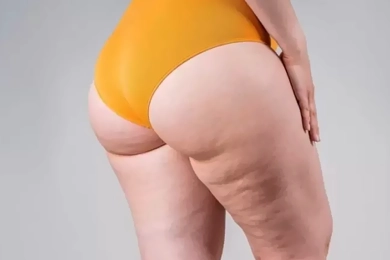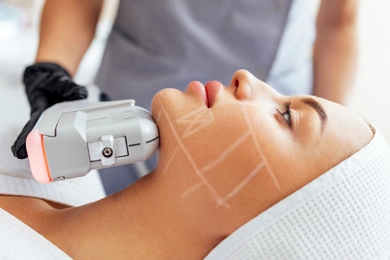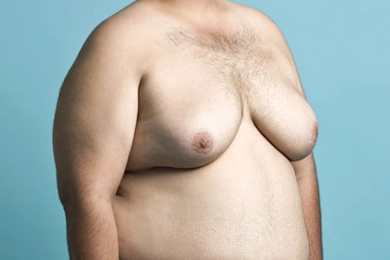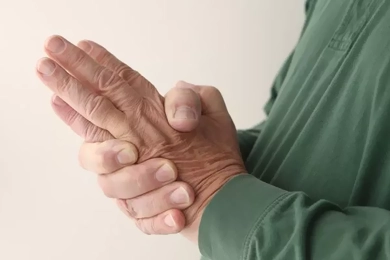
After surgery, scars from stitches are often part of the healing process. These scars can cause aesthetic concerns for many, but with the right treatments, their appearance can be significantly reduced. So, how can you get rid of surgical stitch scars? In this article, we’ll explore how stitch scars form, the best treatment options to reduce their visibility, and what you can do to minimize them.
Stitch scars occur as a result of skin damage caused by a cut or wound that heals over time. As the skin repairs itself, collagen is produced, and in some cases, this can result in more prominent scars. The main factors influencing the formation of stitch scars are:
There are several methods and treatment options available to reduce the appearance of stitch scars. The type of treatment chosen depends on the nature of the scar, skin type, and the healing process. Here are some effective treatments to help reduce the visibility of surgical stitch scars:
Silicone-based products are one of the most commonly used methods for scar treatment. Silicone helps retain moisture in the skin, aiding faster scar healing. With regular use, silicone gels and sheets can soften scars and make them less noticeable. These products are effective for both new and old scars.
Laser therapy is highly effective in reducing the appearance of stitch scars. Laser beams target excess collagen in the skin, helping to flatten and lighten the scar. It is especially useful for hypertrophic and keloid scars. Laser treatment is applied over several sessions, with each session gradually improving the appearance of the scar.
Stem cell therapy is a revolutionary method for treating stitch scars. Stem cells derived from fat tissue promote skin regeneration and repair damaged areas. This treatment not only reduces the appearance of scars but also improves the overall texture and health of the skin. Stem cell therapy can be used both to prevent the formation of new scars and to improve the appearance of old ones.
PRP therapy involves injecting platelet-rich plasma, derived from the patient’s own blood, into the scarred area. The plasma, rich in growth factors, accelerates skin regeneration and helps reduce the appearance of scars. PRP is particularly effective in treating newer scars.
Steroid injections are used to treat raised, red scars. Corticosteroids help suppress excess collagen production in the skin, flattening the scar and restoring normal color. These injections are commonly used for keloid and hypertrophic scars.
Chemical peels and microdermabrasion are skin resurfacing techniques that remove the top layer of the skin, reducing the appearance of scars. These treatments are especially effective for superficial scars, as they exfoliate dead skin cells and reveal new, healthier skin.
The timing of scar treatment depends on the type of scar and the individual’s skin type. In most cases, it is best to begin treatment as soon as the wound has fully healed. Early intervention can help scars heal more smoothly and fade before they become permanent. Silicone gels and laser treatments, for example, can be started as soon as the wound heals. Stem cell and PRP therapies provide long-term results by reducing scar visibility over time.
In addition to medical treatments, certain daily habits can help minimize the appearance of stitch scars. Here are some tips to follow:
Protect the Scar from the Sun
Exposure to the sun can cause scars to darken and become more noticeable. Applying a high-SPF sunscreen to the scar area can protect it from harmful UV rays.
Moisturize and Massage the Scar
Keeping the scar area moisturized improves skin elasticity and promotes faster healing. Gentle massage can also increase blood circulation, speeding up the healing process.
Healthy Diet
Support your skin’s health by following a diet rich in vitamins, minerals, and proteins. Vitamin C, in particular, boosts collagen production and helps the skin heal faster.
Avoid Smoking and Alcohol
Smoking and alcohol consumption can slow down the skin’s healing process, making scars more prominent. Avoiding these habits after surgery can help scars fade more quickly.
“There are several effective treatment options available to help reduce the appearance of post-surgical stitch scars. Silicone-based products, laser therapy, stem cell therapy, and PRP are all proven to improve scar appearance. Additionally, the timing of treatment is crucial, with early intervention providing the best results. Protecting scars from the sun, moisturizing regularly, and maintaining a healthy lifestyle can also contribute to the reduction of scar visibility. Since each individual’s skin is different, consulting with a specialist to develop a personalized treatment plan is the best approach.”
 Factors Exacerbating Lipedema: Triggering Drugs, Foods, and Supplements
Factors Exacerbating Lipedema: Triggering Drugs, Foods, and SupplementsLipedema is a common chronic condition, particularly among women, that leads to abnormal fat accumulation in areas such as the legs and hips, significantly reducing the quality of life. This article discusse ...
 Understanding the Distinctions Between Lipedema and Lymphedema
Understanding the Distinctions Between Lipedema and LymphedemaLipedema and lymphedema are often confused due to their similar names and some overlapping symptoms. However, they are distinct medical conditions with different causes, treatments, and management strategies ...
 What is the Best Source of Exosomes?
What is the Best Source of Exosomes?Exosome therapy has emerged as an innovative treatment method for skin rejuvenation, hair loss prevention, wound healing, and immune support. The effectiveness of exosomes depends heavily on their source, ex ...
 What Can Be Done to Prevent Stitch Scars?
What Can Be Done to Prevent Stitch Scars?Stitches, used after surgeries or injuries, help the skin heal but can often leave unwanted scars behind. The permanence of stitch scars depends on many factors, but with the right precautions, these scars c ...
 How Does Stem Cell Therapy Reduce Surgical Scars?
How Does Stem Cell Therapy Reduce Surgical Scars?Surgeries are often vital steps to improve health, but they can leave behind scars that are particularly bothersome for those with aesthetic concerns. Traditional treatments may not always be effective enoug ...
 Does Stem Cell Therapy (SVF) Prevent Scar Formation on the Skin?
Does Stem Cell Therapy (SVF) Prevent Scar Formation on the Skin?Scarring is a natural part of the body’s healing process after injuries, surgeries, or trauma. However, excessive scarring can sometimes lead to aesthetic concerns or functional limitations. Recent studies s ...
 Advantages of Having Lipedema Surgery in Turkey
Advantages of Having Lipedema Surgery in TurkeyTurkey has become a global hub for lipedema surgery due to its skilled surgeons, modern facilities, and affordable healthcare options. In this post, we’ll explore the advantages of having lipedema surgery in ...
 Why You Should Get a Tummy Tuck in Turkey
Why You Should Get a Tummy Tuck in TurkeyWhen considering a tummy tuck (abdominoplasty),selecting the right country for the procedure is crucial. Turkey has emerged as one of the top destinations for medical tourism, especially in the field of cosm ...
 What Causes Teeth Grinding?
What Causes Teeth Grinding?Teeth grinding, also known as bruxism, is a common issue that can affect both children and adults. This involuntary habit usually occurs during sleep but can also happen during the day. If left untreated, te ...
 Is There an Age Limit for Facial Stem Cell Therapy?
Is There an Age Limit for Facial Stem Cell Therapy?Facial stem cell therapy has become a popular option for those looking to rejuvenate their skin and combat signs of aging. This innovative procedure involves using a patient’s own stem cells to stimulate col ...
 Does Stem Cell Facial Rejuvenation Cause Cancer?
Does Stem Cell Facial Rejuvenation Cause Cancer?Stem cell facial rejuvenation has emerged as a cutting-edge anti-aging treatment in recent years. This procedure uses stem cells extracted from the patient's own body, which are then processed and injected i ...
 How Long Do the Effects of Facial Stem Cell Therapy Last?
How Long Do the Effects of Facial Stem Cell Therapy Last?Facial stem cell therapy has gained significant popularity in recent years as a powerful anti-aging treatment. By using stem cells from the patient's own body, this procedure helps rejuvenate and refresh the ...
 Are HIFU Results Permanent?
Are HIFU Results Permanent?High-Intensity Focused Ultrasound, commonly known as HIFU, has gained popularity as a non-surgical treatment for skin tightening and lifting. But one of the most frequently asked questions is: Are the result ...
 How Long Do the Effects of Non-Surgical Face Lifting (HIFU) Last?
How Long Do the Effects of Non-Surgical Face Lifting (HIFU) Last?Non-surgical face lifting methods, especially HIFU (High-Intensity Focused Ultrasound),have become a popular choice for skin tightening and rejuvenation. But one of the most common questions is: how long do ...
 How to Know If You Have Lipedema: A Complete Guide
How to Know If You Have Lipedema: A Complete GuideA persistent medical condition called lipedema is sometimes confused with lymphedema or simply obesity. It is mainly affecting women and is characterized by an abnormal build-up of fat, usually in the arms a ...
 How to Know If You Have Gynecomastia?
How to Know If You Have Gynecomastia?If you suspect you have gynecomastia, it’s important to consult a healthcare professional. Your doctor will perform a physical exam, evaluate your medical history, and may order blood tests to assess hormone ...
 How to Prevent Inflammation?
How to Prevent Inflammation?Have you ever thought about why we age? While aging is a natural process, recent research has shown a surprise component that accelerates it: chronic inflammation. ...